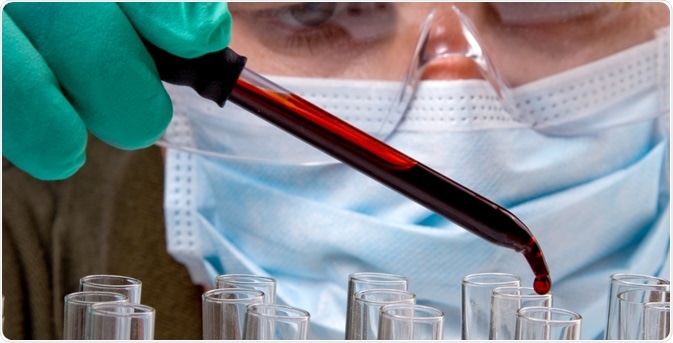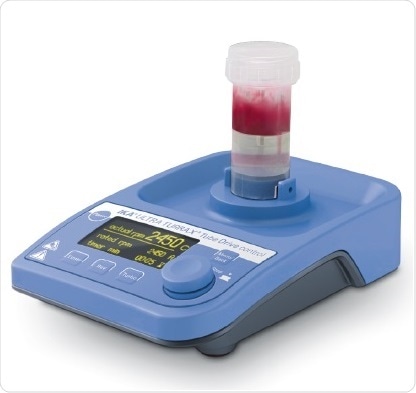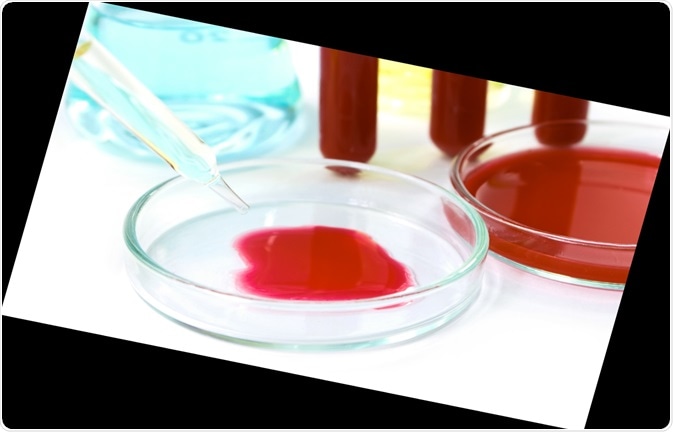Sponsored Content by IKADec 18 2017
In 1247, Song Ci, a Chinese medicolegist, wrote the first monograph for modern forensics called Collected Cases of Injustice Rectified. The main aim of Song Ci was to preserve human life, and the “rectified injustices” cited in the title implies to proving the innocence of those individuals who have been wrongly pronounced as guilty.

In current judicial proceedings, medical technologies are frequently being used by forensic investigators to inspect the bodies of corpses and other substances that may be connected with the legal cases.
In the case of poison-related mortalities, for example, forensic investigators have to find out whether poison was the cause of death, what type of poison it is, and the amount of poison present in the body. Therefore, a detailed investigation has to be performed, and precise and accurate identifications are believed to be provided to these questions later on.
The Customer
In one municipal Public Security Bureau of Fujian Province, the role of the Technical Group of Criminal Investigation Department is to identify and analyze different suspicious material evidence related to the city’s criminal cases. Primarily focusing on the investigation for death or personal injury cases, as well as the detection of forensic material proof, such as hair, skeleton, bloodstains, toxics, seminal stain and so on.
The Challenge
An assorted range of unusual materials are examined by forensic investigators, who identify all types of miscellaneous suspicious materials collected from the crime scene. These materials may include anything — bodily fluids like urine and blood, residual substances left at the scene of the crime like vomit, litter, excrement, internal organs, fingernails, hair, and remains connected with buried decaying corpses including soil and coffins.
According to most of the forensic investigators, today’s analytical instruments are already technologically advanced, and afford a high level of accuracy, sensitivity, and detection ability, and most of the work conducted in the labs is in fact spent in sample pre-treatment.
Mr. Huang, a forensic investigator at the Technical Group of Criminal Investigation Department in the municipal Public Security Bureau of Fujian Province, stated that, “We are confronted with two major problems: 1) how to improve the processing efficiency among variously numerous of samples, and 2) how to reduce the chance of cross-contamination between samples. IKA® resolves a most important problem in forensic identification field, and we appreciate it a lot.”
The solution - Disposable Tube, World-First Dispersing Technology


IKA® provided a UTTD control tube disperser to a customer, which helped resolve these two major issues. For instance, in Acute Organic Phosphorus Poisoning (AOPP) cases, forensic investigators have to gather and examine substances that are associated with the hophead, such as container of the pesticide, his/her leftover, vomit, drinks, gastric juice, urine, blood, lung, kidney, liver, and so on.
Among the many different samples, the organic solvent extraction method can be used to collect solid and semisolid samples for analysis, but before this is done the lung, kidney, and liver have to be homogenized. The IKA® UTTD control provides several benefits in this type of application, which can be summed up as follows:
- IKA® UTTD control with 50 ml dispersing tube can complete the homogenization of a single sample in just 1 to 2 minutes; with the help of the 50 ml dispersing tube, 3 to 5 g of kidney, liver, and lung tissues can be processed. A wide range of samples can be processed separately at the same time, considerably improving the efficiency of processing as opposed to conventional manual grinding.
- Viscera samples contain high amounts of connective tissue and fibers. The IKA® UTTD control comes with a unique reverse function that can easily overcome the issues of connective tissue and fibers that wind along the dispersing elements.
- Turbo key is provided which can immediately increase the speed of dispersing elements to 8000rpm. This significantly improves the dispersing efficiency and allows rapid sample homogenization.
- Disposable tubes are also employed. During grinding, the samples are individually processed so that any possible cross-contamination that may occur on a usual disperser after repeated use can be prevented.
- For future reference or analysis, the ground samples can be kept in the same tubes at a temperature of 4°C.
The Benefit to the Customer
Avoiding cross-contamination during sample processing is the ultimate requirement when processing forensic toxic samples. The IKA® UTTD control is designed to meet this need and thus enhance the processing efficiency. According to officer Huang, “IKA® resolves a most important problem in forensic identification field, and we appreciate it a lot.”
About IKA
 The IKA group has over 800 employees at eight locations on four continents and is proud to serve customers such as BASF, Bayer or Procter&Gamble.
The IKA group has over 800 employees at eight locations on four continents and is proud to serve customers such as BASF, Bayer or Procter&Gamble.
IKA are the leader in the world market in most of the product groups and a leading example for development and growth. Their Corporate slogan is IKA-Designed to work perfectly.
Process Technology
The Process Technology division of IKA offers turnkey solutions and state-of-the-art manufacturing options. IKA‘s solutions include: dispersing machines, homogenizers, stirrers, jet flow agitators, kneading machines, vacuum dryers as well as ready-for-use process plants, all being manufactured in IKA‘s outstanding high product quality. Consulting, design and realization of complex projects as well as proactive after-sales services complete IKA’s solution portfolio.
Laboratory Technology
IKA laboratory technology offers a wide range of innovative equipment for numerous applications in research and development. Market leaders trust in our proven technology for their mixing, heating, distilling and crushing applications. IKA has gained a leading position in the world market with its innovative magnetic stirrers, mixers, overhead stirrers, shakers, homogenizers, mills, rotary evaporators, calorimeters, laboratory reactors and specially developed software for laboratory and analysis applications.
Global Coverage
The IKA group has global coverage with eight different regional divisions;
- Germany - IKA® Werke GmbH & Co. KG
- Poland - IKA® Poland Sp. z o.o.
- UK - IKA® England LTD
- North America - IKA® Works, Inc.
- South America - IKA® Works Brazil
- China - IKA® Works Guangzhou
- Japan - IKA® Japan
- China - IKA® China
- Malaysia - IKA® Works Malaysia
- India - IKA® India Private Limited
- Korea: IKA® Korea. Ltd.
Sponsored Content Policy: News-Medical.net publishes articles and related content that may be derived from sources where we have existing commercial relationships, provided such content adds value to the core editorial ethos of News-Medical.Net which is to educate and inform site visitors interested in medical research, science, medical devices and treatments.